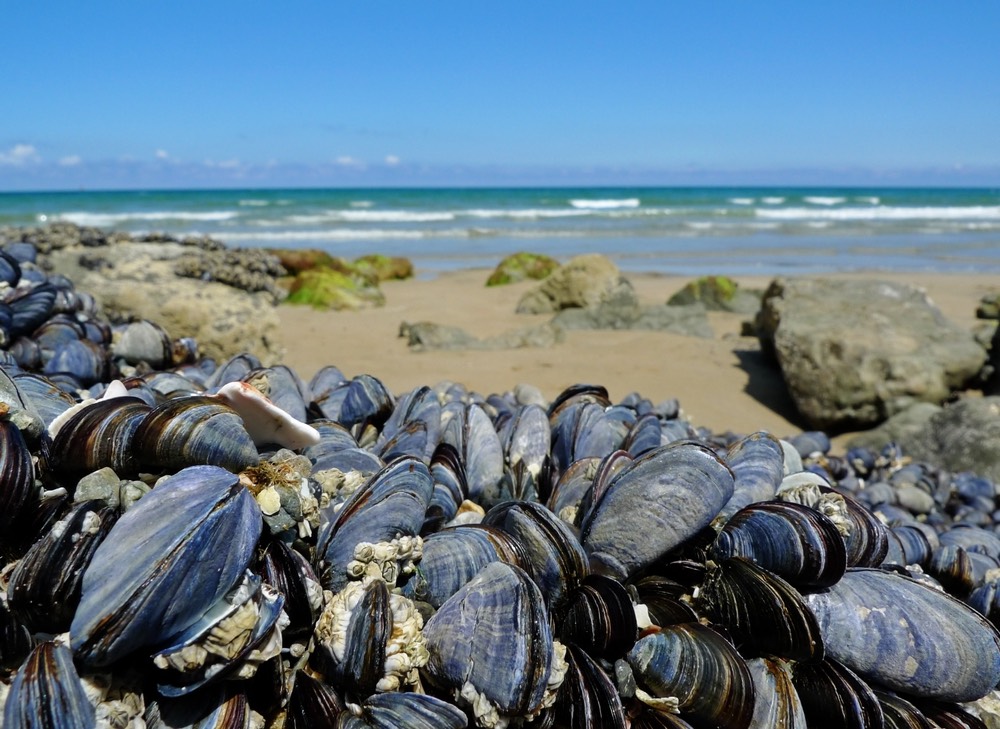In Shellfish, Cancer Can Be Contagious

Cancer can spread infectiously between shellfish, such as clams, in the oceans, according to a new study.
The finding suggests that such "transmissible cancers" may be far more widespread than scientists previously thought.
Although cancer can spread to distant parts of a body, in an often-deadly process known as metastasis, it generally stays within the individual in which it originated. Recently, however, scientists discovered that cancer cells can sometimes escape an organism and spread to others. These cells are clones that are nearly identical to the originals, save for mutations that might have popped up since they diverged from the initial cancer cells.
For years, transmissible cancers were seen only in two mammal species — dogs and Tasmanian devils— which suggested that they might be rare in nature. However, in 2015, researchers discovered transmissible cancers in soft-shell clams, suggesting that such infections might be more widespread than previously thought. [Photos of Tasmanian Devils with Transmissible Cancer]
Shellfish share cancer
In the study, researchers collected mussels, cockles and golden carpet shell clams from sites in Canada and Spain. They focused on a leukemia-like disease in these shellfish known as disseminated neoplasia, which leads to many large, abnormal cells in the circulatory system.
Genetic analysis of the cancers and their hosts revealed that in nearly all of these cases, the genetic makeup of these cancer cells did not match those of their hosts. Instead, the cells came from other animals.
These invading cells "seem to be the most frequent causes of these leukemia-like cancers in mollusks," said study senior author Stephen Goff, a molecular biologist at Columbia University Medical Center in New York. (Usually in cancer, a trigger causes the organism's own cells to multiply uncontrollably.)
Get the world’s most fascinating discoveries delivered straight to your inbox.
For example, the transmissible cancers seen in golden carpet shell clams did not genetically match any members of this species, but instead matched the pullet shell clam, where they likely originated.
"I think the most surprising aspect is the realization that these infectious clones spreading between individual animals in the oceans are indeed very common," Goff said. "It awakens us to the fact that animals living in the sea are really in a shared environment — that viruses, bacteria and even cells are freely circulating between individuals."
How shellfish transmit cancer
It remains uncertain how shellfish are spreading cancers to each other. Tasmanian devils spread cancers by biting each other on the face, and dogs transmit the diseases through sexual intercourse, but neither method is a possibility with these immobile shellfish. One possibility is that cancer cells may enter seawater via the excrement of their original hosts and then invade the digestive or respiratory tracts of new victims, Goff said.
The scientists noted that there is no evidence that these transmissible cancers they saw would ever spread beyond mollusks. "I would want to reassure people that there is no reason for concern that these cancers will be transmitted to humans," Goff said. "In the one case of interspecies transmission, the transmission was to a closely related species."
Future research could investigate whether human cancers might ever spread from human to human. "We expect such events to be very rare and only occurring under special circumstances," Goff said. "These could likely only occur between genetically closely matched pairs of individuals, or to a profoundly immunocompromised recipient."
Future research can also investigate what mutations allow such cancers to spread from one body to another. "We think these mutations will be informative with respect to the mechanisms that human cancers use during metastasis," Goff said.
The scientists detailed their findings online June 22 in the journal Nature.
Original article on Live Science.



